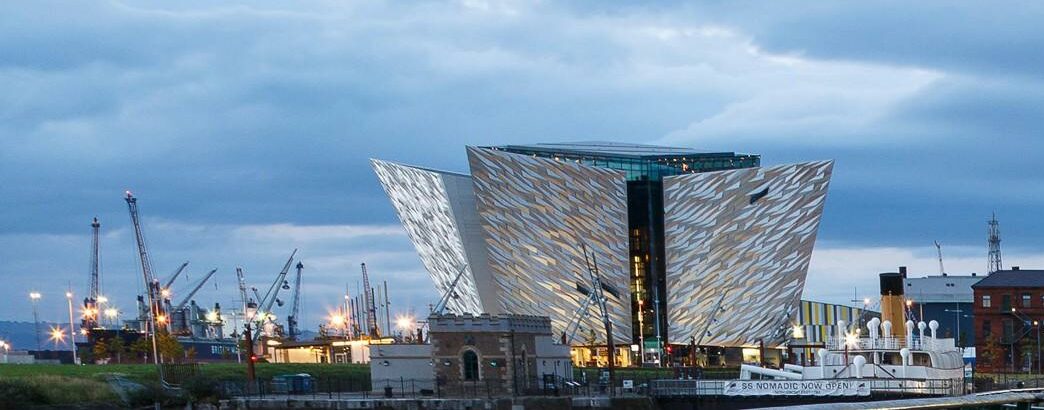Visit Belfast, the capital of Northern Ireland
Belfast, Northern Ireland’s vibrant capital, is a city in the midst of transformation, blending industrial heritage, contemporary culture and seascapes. Long marked by the conflicts of the past, it has today established itself as a dynamic tourist destination, rich in history, art and hospitality.

Why visit Belfast?
Belfast seduces with its unique blend of history, creative energy and human warmth. With its former shipyards converted into cultural venues, murals full of memories and friendly atmosphere, the city offers a captivating journey to the heart of Northern Ireland. Accessible and on a human scale, it’s also the ideal starting point for exploring the Giant’s Causeway or the Antrim Coast.
The must-haves
- Titanic Belfast: interactive center telling the story of the famous ocean liner built in Belfast.
- City Hall: Imposing city hall in the heart of Belfast, with spectacular Victorian architecture.
- Crumlin Road Gaol: former prison turned museum, witness to the political upheavals of the 20th century.
- St. Gallen St. George’s Market Historic covered market, ideal for sampling local specialities and discovering crafts.
- Botanic Gardens and Ulster Museum: the perfect duo for strolling through nature and exploring Northern Irish history.
- Peace Walls and murals: emblematic murals depicting the city’s political history.
Neighborhoods to explore
- Cathedral Quarter: Cultural and trendy quarter, renowned for its street art, pubs and festivals.
- Titanic Quarter: An area redeveloped around naval history, with museums and waterfront promenades.
- Queen’s Quarter: lively student quarter around Queen’s University, with cafés and green spaces.
- Lisburn Road: Ideal for shopping, brunch and a chic residential atmosphere.
Practical advice
| Transport | Belfast is well served by bus and has many cab ranks. |
| Hosting | Numerous hotels and B&Bs from the center to quieter neighborhoods. |
| Currency | Pound sterling (£), Northern Irish banknotes accepted. |
| Language | English, with Irish on some signs. |
| Weather | Cool oceanic climate; bring a windbreaker all year round. |
| Formalities | UK entry formalities have changed, so check in advance. |
Where to eat?
- Ox: Michelin-starred restaurant offering modern, local cuisine.
- Mourne Seafood Bar: Renowned for its fresh seafood and generous dishes.
- The Crown Liquor Saloon: A listed pub with unmistakable Victorian charm.
- Established Coffee: A popular address for artisanal coffees and gourmet brunches.
When to leave?
Belfast can be visited all year round, but April to September offer a milder climate for exploring the city on foot or by bike. Summer is a great time for outdoor festivals and events, while autumn reveals beautiful hues in the public gardens. In winter, the city is decked out in lights and festive markets.
What are the formalities for visiting Belfast?
Nationals of the European Union, the USA, Canada and many other countries must now obtain an ETA UK if they do not have a visa for England.
The ETA can be applied for online or via the official UK ETA application. Valid for short-term tourist stays, the ETA can only be obtained online at gov.uk. Irish citizens, British residents and holders of existing visas are not concerned.
Conclusion
Belfast combines historical heritage, cultural dynamism and warm hospitality. Compared to other major British cities such as London, with its cosmopolitan vibrancy, or Edinburgh, famous for its international festival, Belfast stands out for its authenticity and unique maritime heritage.
Unlike Manchester and Liverpool, famous for their music and soccer scenes, Belfast charms with its coastal scenery and intimate atmosphere. When you visit Belfast, you’ll discover a city in the midst of a renaissance, offering an unforgettable experience blending tradition and modernity.